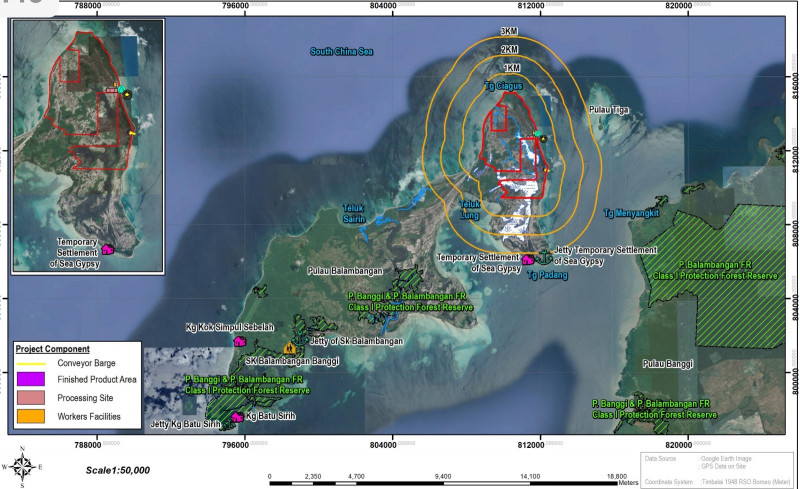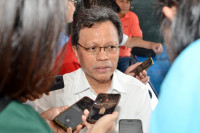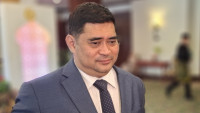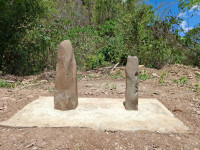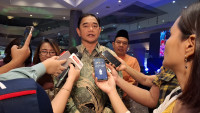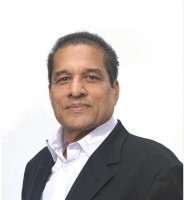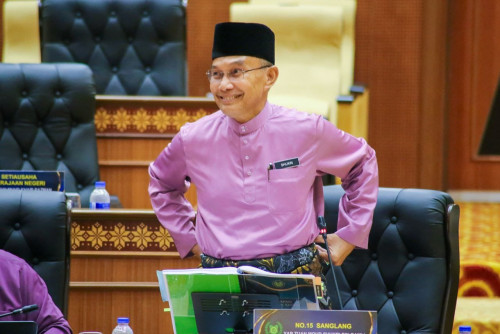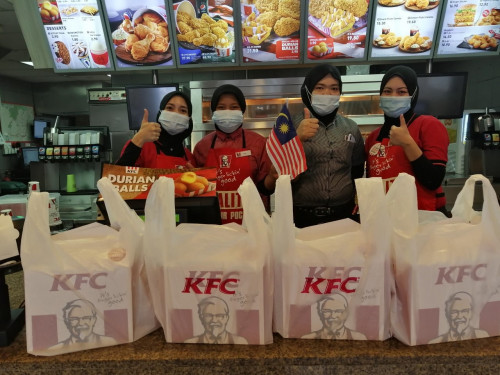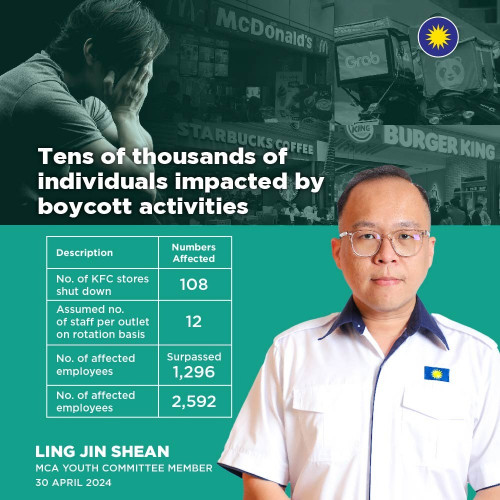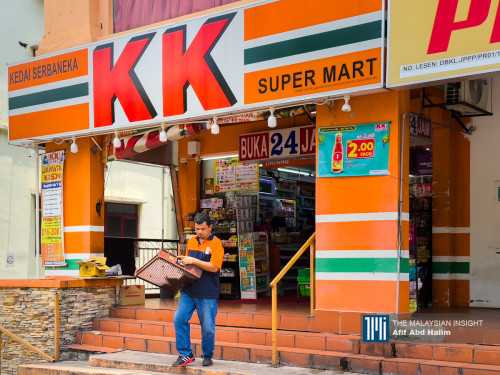FRESH DETAILS have emerged over a proposed silica mining project in Balambangan Island off Sabah’s northernmost district of Kudat, leading to questions on whether the venture will gain traction.
This is especially so as a Sarawakian businessman previously linked to the controversial project announced that he has backed out from the deal.
Media outlets recently obtained information on the project’s completed Environmental Impact Assessment (EIA) report, exposing details of what was supposed to be a venture between landowner Yayasan Sabah and Innovate Platinum Sdn Bhd, a company owned by Sarawak businessman Datuk Seri Thomas Hah Tiing Siu.
On October 16 last year, Hah had announced his withdrawal after preliminary details of the project were leaked on social media and gained widespread negative attention.
Balambangan Island is situated amid coral-rich waters within the Tun Mustapha Park, an ecologically rich marine area.
Key EIA details
The EIA report states the terms of references for extraction of silica sand, covering 1,060 ha, out of the total 2,418 ha on the northern part of the island.
“The operation involves site preparation, mining of raw silica sand using hydraulic (suction dredging) and excavation methods, and processing the sand at a proposed facility on the eastern coast,” it says.
The processed silica sand will be transported to a loading site at the southeastern coast for export to end users in China.
The project is planned to operate for twelve years, divided into four phases from June 2024 to December 2036, the report states.
The development period, including site preparation and establishment of the processing plant and workers' facilities, is estimated to take approximately two and a half months.
The main activities include pit preparation, mining, coarse separation, fine sorting, mud separator, magnetic separation, and dehydration.
The total estimated silica sand resource for the project area has not been determined.
“The project's purpose is to utilise available silica sand resources, contributing to Sabah's silica sand industry, generating revenue for the government, and fostering economic growth in the local communities.
“The project is currently under technical study and planning, including the preparation of various reports, and land status indicates ownership by Yayasan Sabah,” the report adds.
Marine area gazetted
Mining interest in Balambangan Island is not new. The Vibes has reliably learnt that extraction activities on the island can be traced back to 1996, with interested parties eyeing limestone and silica deposits.
They were however met with opposition and the matter died off instantly, according to sources familiar with the island.
“In 2019, another attempt was made to restart mining activities on the island, specifically limestone, and eventually silica too,” the source said. “But when the environmental groups opposed it, the move again disappeared.”
The source noted the actions of the Sabah state government appears to be conflicting with their own policies.
The state has gazetted the area as part of a marine park, stressing the importance of conservation. However, it was at the same time making deals with companies to extract the natural resources, threatening the ecosystem and rich biodiversity of the area in the process.
“The Balambangan island issue is interesting to look at. First the government decided to gazette the islands as part of the marine park, limiting the economic activities of the local inhabitants for the sake of conservation and future. But they also opened for sand extraction which is not a renewable economic activity.
“Once you take the sand, there will be no more sand. It will take millions of years to produce a grain of sand. When they remove it. It takes millions of years to recover,” the source explained.
Sensitive and pristine marine park
Tun Mustapha Park (TMP) is a crucial protected area covering 898,762.76 hectares across the seas of Kudat, Kota Marudu, and Pitas.
The tourism island of Pulau Tiga is located 3.3km on its northeast and Pulau Banggi further 4.8 km east.
According to Sabah Parks, the marine park was established in March 2003 under the Parks Enactment 1984 and formally recognised on May 19, 2016.
As Malaysia's largest protected multi-use marine area, TMP is aimed at preserving significant marine biodiversity, protect endangered species like sea turtles, foster sustainable fisheries, and alleviate poverty among coastal villagers.
With a rich cultural heritage shaped by diverse ethnic groups, TMP is managed through collaboration among government agencies, NGOs, and local communities.
Recognized under the Coral Triangle Initiative, TMP aligns with the Ecosystem Approach to Fisheries Management, playing a vital role in protecting habitats for marine species, including coral reefs, mangroves, and seagrasses.
It is home to a diverse array of marine life. TMP boasts 82 coral species, 715 fish species, 50 shellfish species, 25 sea snail species, 130 seaweed species, 20 shark species, 2 turtle species, 2 dolphin species, and 1 dugong species.
‘Baseless allegations’
It was claimed last year that criticisms against the project were aimed at tarnishing the image of Sabah Chief Minister Datuk Seri Hajiji Noor.
Datuk Nizam Abu Bakar Titingan, information chief of the ruling Gagasan Rakyat Sabah (GRS), was reported by The Star as saying that that the allegations made on the ‘Edisi Panas Sabah’ Facebook page were baseless.
"Claims on the page are filled with fabrications,” he had said in a statement on October 9.
"A check with the state Land and Survey Department shows... no land titles were issued for the applications mentioned in the Facebook page.”
It so happened that details obtained in the EIA report did not state land applications by the firm.
However, they confirmed that the landowner Yayasan Sabah had given the company in question approval to enter the land to begin preliminary quarry work on August 25, 2023.
In the completed report dated January 19, 2024, the proposed project was set to take place on part of the land with CL.055359218, and covering 1060 hectares on the northeastern side of Pulau Balambangan, approximately 40 km off from the mainland shore at Kudat.
Hajiji reportedly denied abusing his position to approve the silica mining project, while promising action against state government officers who had leaked the confidential documents.
EIA reports are supposed to be public. A check with the relevant agencies revealed that the report has not been published despite its completion.
The China factor
Silica refers to silicon dioxide (SiO2), which is a compound commonly found in nature as quartz, a kind of precious stone used for jewellery, electronic components, glass production, construction, and lenses.
In 2022, the Sabah government has already given the greenlight to China-based firm, China-owned Kibling Solar New Materials (M) Sdn Bhd to mine sand in Sikuati also in Kudat despite environmental concerns.
The project included an investment of RM3 billion into Sabah which included the construction of a plant at the Kota Kinabalu Industrial Park and the promise of 90% of the 1,400 jobs the company would offer will be given to locals.
Kibing’s plant in KKIP, 1,199 out of 1,439 are Sabahans (83.3%) as of November last year.
Interestingly, the Chinese government had in the past announced that it would resume a ban on the export of silica sand and quartz sand with effect from March 1, 2007, with “separate arrangements” for exports to Taiwan, Hong Kong, and the Macao area.
China’s interest toward silica mining in other countries grown over the years due to the Chinese government restricting the export of natural sand, including lake, river and sea sand made of silica and quartz, as well as other raw materials needed to produce wafers, the substrate of semiconductors, building and construction products and moulding equipment.
This is considered welcome news to a state like Sabah which is now part of a global competition against lower-priced imports from China, despite the environmental impact of such mining activities. – The Vibes, February 7, 2024



